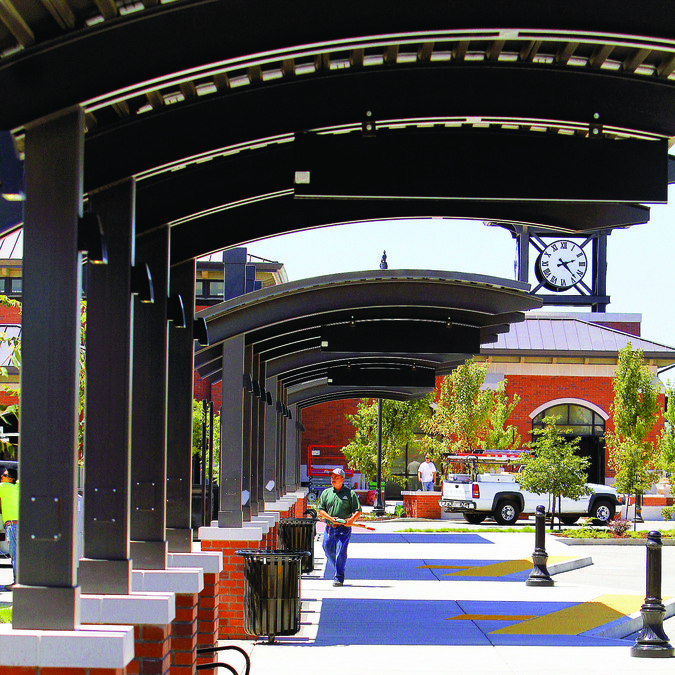Expanding the parking at the Manteca Transit Center for the start of Altamont Commuter Express rail passenger service to San Jose and Sacramento that is targeted to begin in 2023 is among short range city transit goals.
Those goals as well as a recap of the Manteca Transit system is being presented to the City Council when they meet Tuesday at 7 p.m. at the Civic Center, 1001 W. Center St.
The funding for extending ACE service to Ceres that will require double tracking was included in legislation that increased the statewide gas tax. The forecast based on current ridership and projected trends calls for 1,153 riders daily to board at the downtown Manteca Transit Center when trains start rolling.
While Manteca Transit will be working to coordinate routes with the train schedules, the majority of riders are expected to arrive at the station by car — either by driving of being dropped off. A few of the riders also are anticipated to arrive at the station on foot or by bicycle using the Tidewater Bikeway that passes by the station.
The current parking is in adequate to accommodate vehicles for that type of ridership. The most likely scenario is acquiring land along Moffat immediately to the south of the station and connected it with city-owned property to have additional parking space possibly stretching to the existing parking lot at the Manteca Community Center that serves as the Manteca Veterans. In between the Veterans Center and Transit Center is a fenced off and landscaped city well. Given the Tidewater Bikeway as well as sidewalk along Moffat Boulevard makes it easy to reach the station.
There are other nearby properties that could be used but have potential issues. One is the vacant lot across the street from the transit center where the Manteca Bean Co. once stood. It would require commuters to cross Moffat but is also would remove the largest available parcel without structures in downtown for use for future development.
The other is city-owned property along Wetmore Street against the tracks that will be available when much of the city’s corporation yard functions are shifted to the municipal wastewater treatment plant. In order to provide safe passage to the station it would likely require some type of pedestrian bridge crossing the tracks.
ACE will also have to add passenger platforms to the transit center to accommodate passenger service.
Other elements of the Manteca Transit short range plan includes adding bus stop and passenger amenities, increasing marketing efforts to increase ridership, increase the “transit footprint” throughout Manteca, and conducting onboard surveys of bus riders.
Manteca currently operates three local fixed routes that tie into the transit center for connection to San Joaquin Transit bus service. The city also offers a shuttle from the transit center to the Lathrop-Manteca ACE station on West Yosemite Avenue as well as Dial-a-Ride and a complementary paratransit program.
The fixed routes operate Monday through Friday from 6 a.m. to 7 p.m. and Saturday from 9 a.m. to 4 p.m.
The dial-a-ride service operates within the city for seniors, persons with disabilities, and Medicare holders. The complementary paratransit service operates within three quarters of a mile of all three of the fixed routes.
During the fiscal year ending June 30, 2018 the system carried 61,679 passengers with fare box revenue of $52,410.
Fixed-route fares for adults (ages 18 to 61) are $1 for one-way fare, $9 for a 10-ride pass, and $35 for a 31-day pass. Youth (ages 2 to 18) are 75 cents for one-way fare, $7 for 10-ride-pass, and $28 for 31-day pass. Seniors (62 years and older) along with persons with disabilities and Medicare cardholders are 50 cents for one-way fare, $4.50 for 10-ride pass, and $28 for a 31-day pass.
To contact Dennis Wyatt, email dwyatt@mantecabulletin.com





